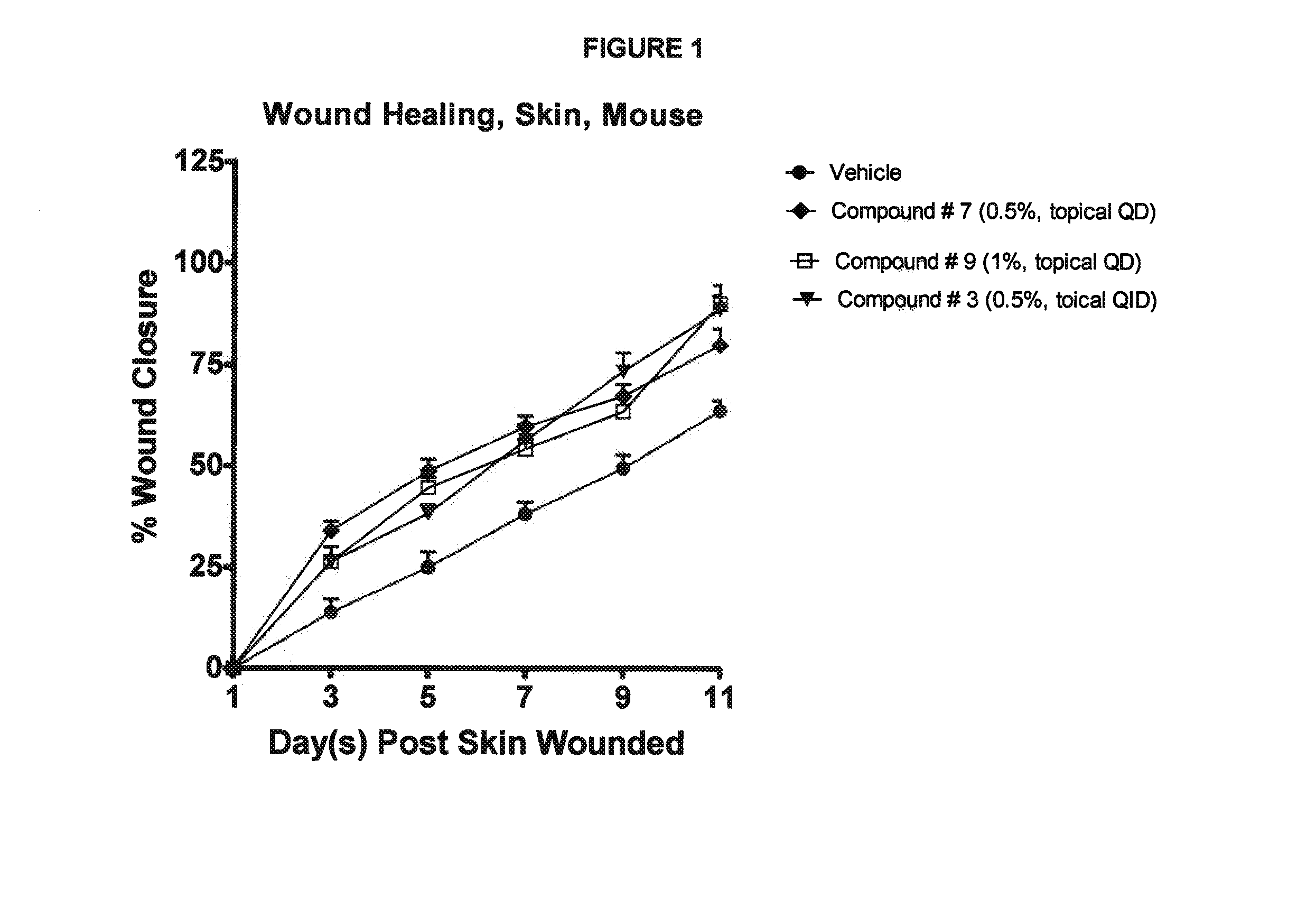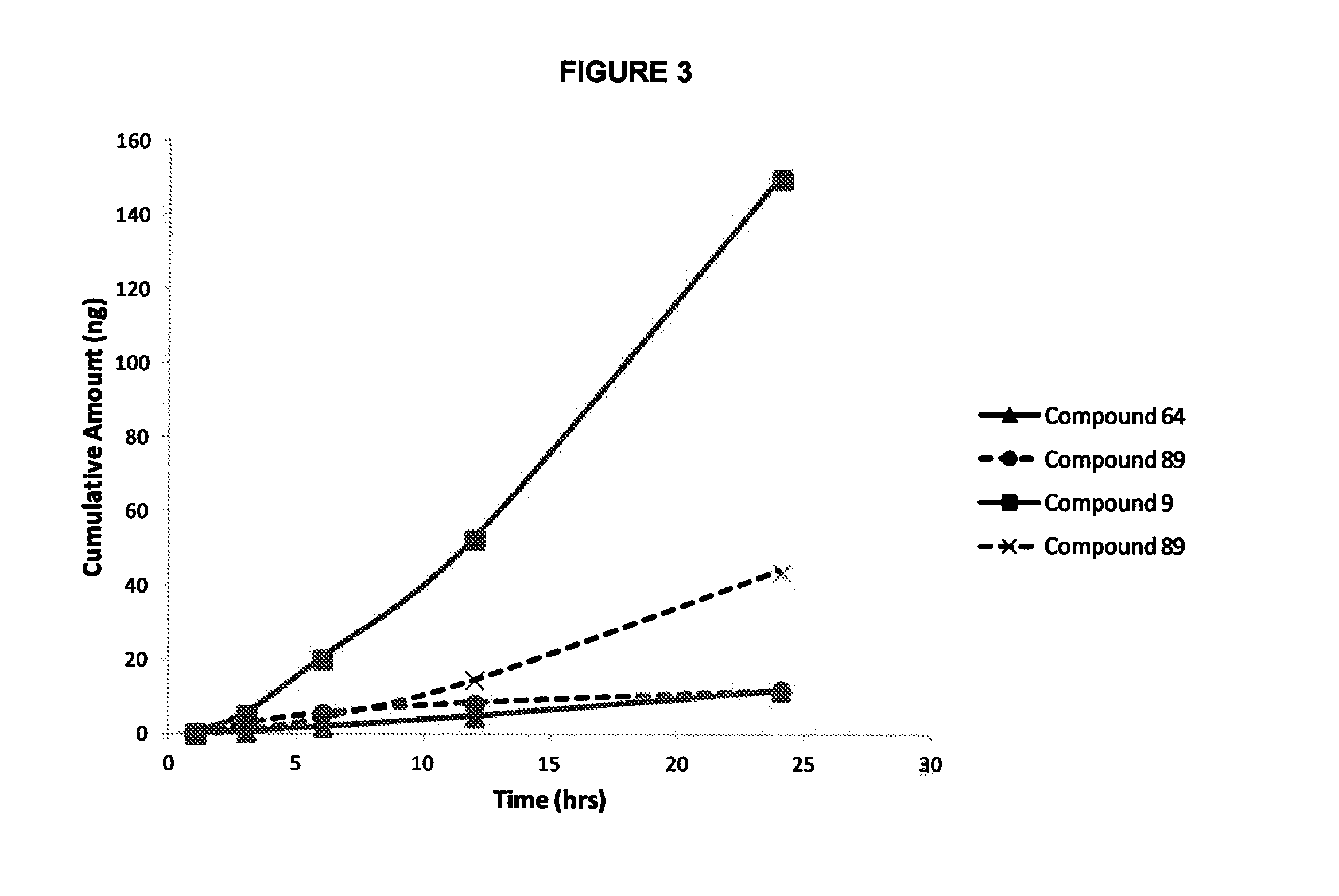Use of agonists of formyl peptide receptor 2 for treating dermatological diseases
a technology of formyl peptide receptor and agonist, which is applied in the direction of phosphorous compound active ingredients, peptide/protein ingredients, drug compositions, etc., can solve the problems of hampered pharmaceutical utility of lipoxin a4 and its analogs, and achieve the effects of reducing inflammation, reducing drug side effects, and reducing side effects
- Summary
- Abstract
- Description
- Claims
- Application Information
AI Technical Summary
Benefits of technology
Problems solved by technology
Method used
Image
Examples
Embodiment Construction
[0012]The present invention relates to a method for treating dermatological inflammation and dermatological diseases in a subject in need of such treatment, which comprises administering a pharmaceutical composition comprising a therapeutically effective amount of at least one agonist of Formyl peptide receptor 2 (FPR2).
[0013]In another aspect, the invention provides the use of at least one agonist of FPR2 for the manufacture of a medicament for the treatment of a dermatological inflammation disease or condition mediated by FPR2 in a mammal
[0014]In another aspect, the invention provides a method for treating dermatological inflammatory diseases, which comprises administering a pharmaceutical composition comprising a therapeutically effective amount of at least one agonist of FPR2 as disclosed in U.S. patent application Ser. No. 13 / 668,835, provided that the compounds have binding activity at the FPR2 receptor.
[0015]In another aspect, the invention provides the use of at least one co...
PUM
| Property | Measurement | Unit |
|---|---|---|
| pH | aaaaa | aaaaa |
| thickness | aaaaa | aaaaa |
| surface area | aaaaa | aaaaa |
Abstract
Description
Claims
Application Information
 Login to View More
Login to View More - R&D
- Intellectual Property
- Life Sciences
- Materials
- Tech Scout
- Unparalleled Data Quality
- Higher Quality Content
- 60% Fewer Hallucinations
Browse by: Latest US Patents, China's latest patents, Technical Efficacy Thesaurus, Application Domain, Technology Topic, Popular Technical Reports.
© 2025 PatSnap. All rights reserved.Legal|Privacy policy|Modern Slavery Act Transparency Statement|Sitemap|About US| Contact US: help@patsnap.com



